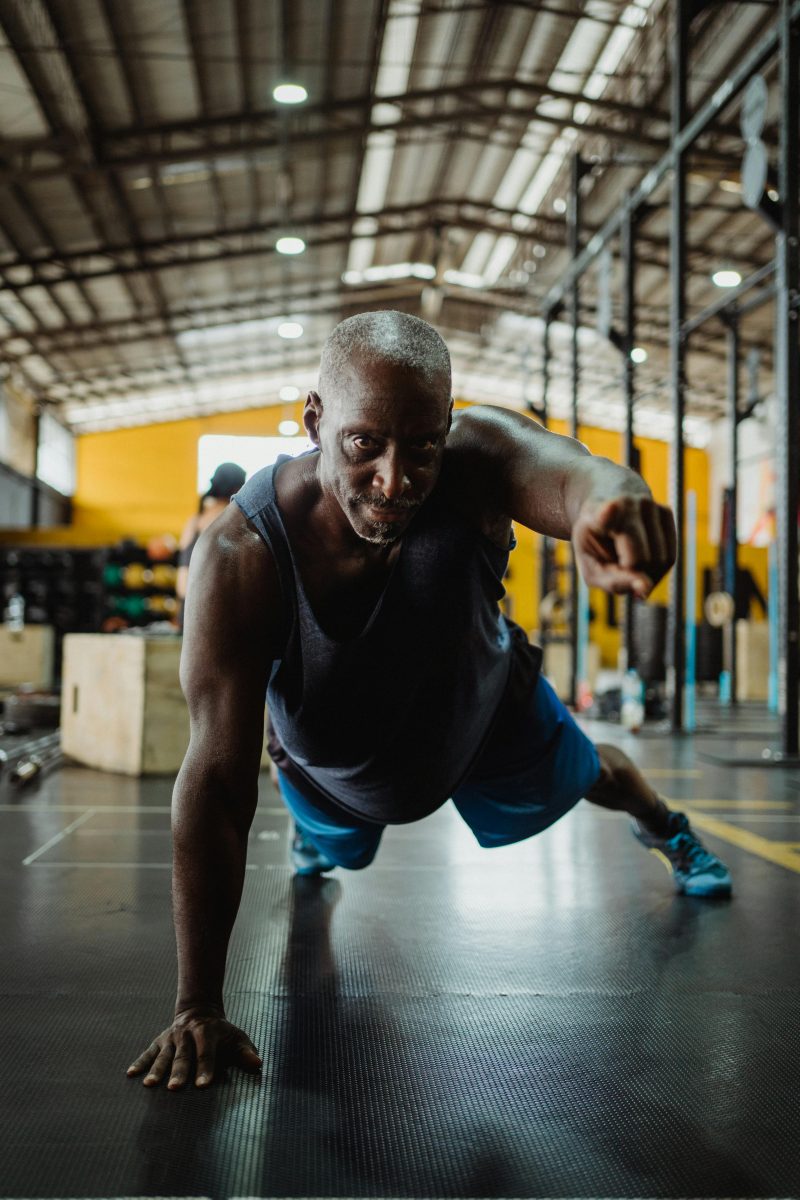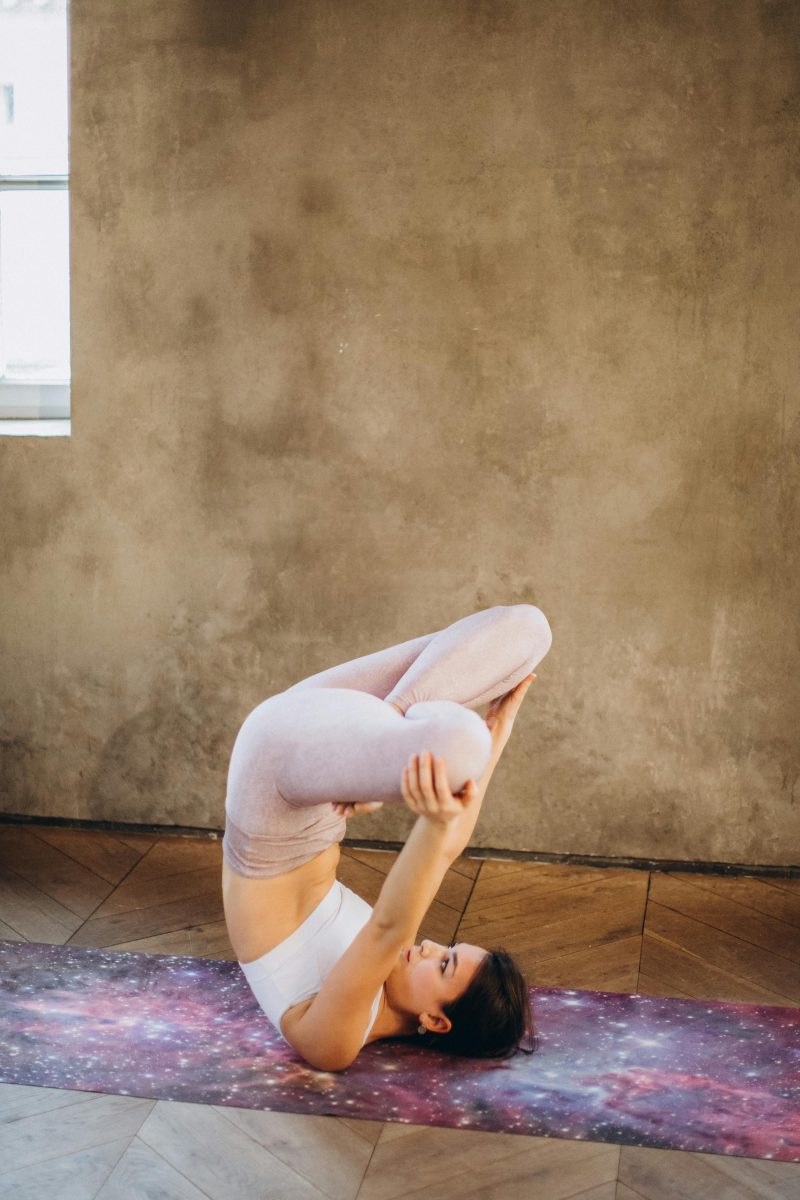Last Updated on: 14th July 2024, 09:29 am
Introduction to Core Strength and Posture

At the heart of a balanced body lies the core, a complex series of muscles extending far beyond the abdominals, including the pelvis, lower back, hips, and stomach. These muscles are pivotal for overall stability and strength, acting as the body’s central support system. A robust core is not just about aesthetic appeal; it’s the foundation for all bodily movements, playing a crucial role in preventing injuries and maintaining optimal physical health.
However, the modern lifestyle, characterized by prolonged sitting and minimal physical activity, has led to a surge in postural problems. Slouching, rounded shoulders, and an anterior pelvic tilt are just the tip of the iceberg. These common postural deviations not only detract from our physical appearance but can lead to chronic pain and reduced mobility over time.
The link between core strength and posture is undeniable. A strong core supports the spine, helping to maintain an upright and aligned posture throughout the day. It acts as a natural corset, pulling everything into alignment and reducing strain on the back. By focusing on core exercises, individuals can significantly improve their posture, enhancing both their physical appearance and overall health. This connection underscores the importance of incorporating core strengthening exercises into daily routines for postural correction and a healthier, more vibrant life.
Understanding Postural Imbalances

Causes of Poor Posture
- Habitual sitting positions
- Incorrect ergonomics at work
- A lack of physical activity
The Impact of Modern Lifestyle on Posture
Today’s lifestyle exacerbates postural problems. The digital era has us glued to screens, promoting a sedentary lifestyle that weakens core muscles and encourages poor sitting and standing habits. This lifestyle, coupled with inadequate exercise, paves the way for postural imbalances that can affect our health and well-being.
Identifying Common Postural Imbalances
Recognizing postural imbalances is the first step towards correction. Rounded shoulders, forward head posture, and an anterior pelvic tilt are prevalent. These imbalances not only affect our appearance but can lead to discomfort and a higher risk of injury. By understanding these common issues, we can take proactive steps towards improving our posture through targeted exercises and lifestyle changes.
Integrating core exercises into our daily routine is not just beneficial; it’s essential for correcting these imbalances. A strong core acts as the foundation for a well-aligned posture, enabling us to tackle the challenges of a modern lifestyle head-on. As we strengthen our core, we fortify our body’s central support system, promoting a healthier, more balanced posture that enhances both our physical appearance and overall health.
The Role of Core Exercises in Postural Correction

How Core Exercises Influence Posture
Core exercises are pivotal in sculpting not just a visually appealing midsection but also in enhancing our overall posture. By strengthening the muscles around the abdomen, lower back, hips, and pelvis, these exercises lay a robust foundation for the body’s upper and lower segments to align correctly. A strong core equips us with the stability needed to maintain an upright posture, reducing the likelihood of slouching and the resultant strain on the spine.
The Role of the Core in Maintaining Spinal Alignment
The core is often referred to as the body’s “central support system.” Its strength is crucial for spinal alignment and balance. When the core muscles are weak, our body compensates by over-relying on other muscles, leading to imbalances and, consequently, poor posture. Strengthening the core, therefore, directly contributes to a more natural and aligned posture, mitigating back pain and improving overall mobility.
Research Findings on Core Exercises and Postural Improvement
Recent studies underscore the effectiveness of core exercises in postural correction. Research indicates that individuals who engage in regular core strengthening exercises exhibit significant improvements in posture compared to those who do not. These exercises enhance the endurance of the core muscles, enabling them to support the spine more effectively and maintain an upright posture for extended periods. The evidence is compelling; incorporating core exercises into one’s fitness regimen can lead to marked postural improvements, contributing to a healthier spine and a more balanced body.
Embracing core exercises is more than a step towards aesthetic goals; it’s a journey towards a healthier, more aligned body. The science is clear: a strong core is the cornerstone of good posture. By integrating core strengthening exercises into our daily routines, we not only enhance our physical appearance but also take a significant leap towards improving our overall health and well-being. Let’s prioritize our core, for a posture that stands tall against the challenges of modern life.
Core Exercises for Postural Correction

Basic Core Strengthening Exercises
- Planks: Engage not just the abdominals but also the shoulders, chest, and legs.
- Bridges: Focus on the lower back and pelvic muscles, crucial for spinal alignment.
- Pelvic Tilts: Target the lower back and help in correcting the anterior pelvic tilt.
Advanced Exercises for Core Stability and Postural Alignment
- Dead Bug: Emphasizes coordination and stability, engaging the deep core muscles.
- Russian Twists: Challenge the core muscles, promoting greater endurance and strength.
- Stability Ball Exercises: Enhance core stability and postural alignment.
Incorporating Core Exercises into Daily Routines
Integrating core exercises into your daily routine doesn’t require a monumental shift in your lifestyle. Simple changes, such as performing a set of planks or bridges during TV commercials or taking short breaks at work to do pelvic tilts, can make a significant difference. Consistency is key; even a few minutes a day can contribute to a stronger core and better posture.
Emphasizing the importance of core strength for postural correction cannot be overstated. A strong core is the foundation of a well-aligned body, enabling us to navigate the challenges of a sedentary lifestyle with confidence. By dedicating time to core strengthening exercises, we invest in our health, enhancing our posture and overall well-being.
Addressing Specific Postural Issues with Targeted Core Exercises

Exercises for Anterior Pelvic Tilt Correction
Anterior pelvic tilt, characterized by an exaggerated forward hip tilt, can be mitigated through targeted core exercises. Strengthening the abdominals and glutes while stretching the hip flexors and lower back is key. Exercises such as the posterior pelvic tilt, performed by lying on your back and tightening your abdominal muscles to press your lower back into the floor, are highly effective. Incorporating bridges and planks also helps in realigning the pelvis to a more neutral position.
Strengthening Exercises for Upper and Lower Cross Syndromes
Upper and lower cross syndromes, resulting from muscle imbalances across the body, require a strategic approach. For the upper cross syndrome, focus on exercises that strengthen the weak muscles of the neck and shoulders, like reverse dumbbell flys and isometric neck exercises. Lower cross syndrome benefits from strengthening the abdominals and glutes, with exercises such as bird dogs and leg raises, to counteract the weak links in the chain.
Tailoring Core Exercises to Individual Postural Needs
Understanding that each body is unique is crucial in postural correction. Tailoring core exercises to address specific needs ensures more effective results. For instance, someone with a pronounced forward head posture might focus on neck and upper back strengthening exercises alongside their core routine. It’s about creating a balanced approach that considers individual postural deviations and targets them with precision.
By integrating these targeted exercises into your routine, you can address specific postural issues effectively. Remember, consistency is key. Regular practice, combined with an awareness of maintaining good posture throughout the day, can lead to significant improvements in how you stand, sit, and move—ushering in a healthier spine and a more balanced body.
Integrating Core Strengthening into a Holistic Approach for Postural Correction

The Importance of Consistency and Progression in Exercises
- Consistency in core strengthening is the bedrock of postural improvement. Engaging in exercises regularly, even for short periods, can lead to profound changes.
- Progression is equally important; as the body adapts, increasing the intensity and complexity of exercises ensures continued growth. This gradual increase not only prevents plateaus but also keeps the journey towards better posture both challenging and rewarding.
Complementary Practices for Improving Posture
- Yoga and Pilates, with their emphasis on alignment and core engagement, are excellent complements to core exercises. These practices enhance flexibility, balance, and body awareness, all of which are critical for postural correction.
- Incorporating these disciplines can accelerate progress, creating a synergy that fortifies the core and straightens the spine.
Lifestyle Changes to Support Postural Correction
- Mindful sitting, with feet flat and back straight, transforms passive activities into opportunities for improvement.
- Standing desks and ergonomic chairs also contribute to a healthier posture.
- Additionally, staying hydrated and maintaining a healthy weight can reduce the burden on the core, making it easier to maintain proper alignment.
By weaving core strengthening into the fabric of daily life, and complementing it with practices like yoga and Pilates, a holistic approach to postural correction is formed. This approach, supported by lifestyle changes, paves the way for a healthier spine and a more confident stance in the world.
In Closing
A strong core is the backbone of good posture. It’s the key to navigating modern life’s sedentary challenges with resilience. Strengthening the core transcends mere physical aesthetics, embarking us on a journey towards a balanced body and a life free from the constraints of postural imbalances. Through targeted exercises, lifestyle adjustments, and a commitment to consistency, we can achieve a posture that not only looks good but feels great. Let’s stand tall, embracing core strength as our foundation for a healthier tomorrow.
The Role of Core Exercises in Postural Correction FAQs
Yes, exercises like chin tucks and neck stretches, when combined with overall core strengthening exercises, can be effective in correcting a forward head posture. These exercises specifically target the muscles that are weakened by this posture and help in realigning the head over the shoulders. Strengthening the overall core also provides the necessary support for maintaining this alignment.
While core exercises are a critical component of postural correction, they should be part of a broader approach that includes flexibility training and overall physical conditioning. Good posture is a result of strong and balanced muscles throughout the body, not just the core. Therefore, incorporating a variety of exercises that improve strength, flexibility, and balance is essential for the best postural correction.
Yes, core exercises can significantly reduce back pain associated with poor posture. Strengthening the core muscles supports the spine, reducing the undue stress that contributes to back pain. Regularly performing these exercises can alleviate pain and prevent future postural issues.
Yes, performing core exercises with improper form can lead to muscle imbalances and potentially worsen posture. Incorrect execution may strain certain muscles while neglecting others, leading to an imbalance that can pull the body out of alignment. It’s essential to learn the correct technique and gradually increase the intensity to avoid these issues.
Core exercises strengthen the muscles around your trunk and pelvis, which are crucial for maintaining proper posture. By enhancing the stability and strength of these muscles, your body can maintain alignment more effectively. This improvement in muscle function helps reduce the strain on the back and can correct postural imbalances.
Proper form is crucial when performing core exercises for posture improvement. It’s important to focus on engaging the correct muscles and maintaining alignment throughout each exercise. Seeking guidance from a fitness professional or physical therapist can ensure that you are performing the exercises correctly and effectively.
Improvements in posture from core exercises can be seen in as little as a few weeks with consistent practice. However, significant and lasting changes typically require a few months of regular exercise. The key is consistency and gradually increasing the challenge of the exercises as your core strength improves.
For optimal results, core exercises should be done 3 to 4 times a week. Consistency is key in building muscle strength and endurance, which are necessary for postural correction. Over time, this regular practice helps in developing a stronger core that supports a better posture.
No, it is not necessary to use equipment for core exercises aimed at postural correction. Many effective exercises, such as planks, leg raises, and abdominal bracing, can be performed using just your body weight. These exercises can be easily done at home or in any suitable environment without the need for specialized equipment.
Exercises that engage the entire core, such as planks, bridges, and abdominal bracing, are highly effective for postural correction. These exercises target not just the superficial muscles but also the deeper core muscles that support spinal alignment. Incorporating a variety of these exercises ensures a comprehensive approach to strengthening the core and improving posture.
Orlando is a all round athlete from Australia, now resident in Germany. His sports of passion of American Football(Offensive line), weight training and indoor rock climbing where he uses his 195cm wing span to his advantage.



